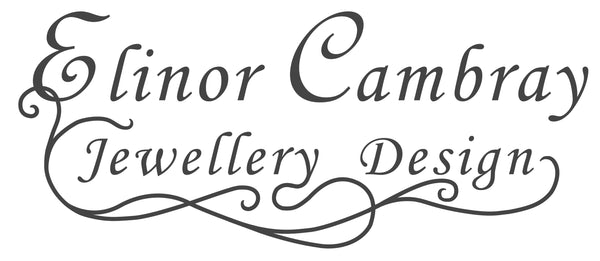
Your guide to metals
Your jewellery can be made from recycled 9ct or 18ct gold (yellow, white or rose), platinum, palladium or recycled sterling silver.
You can compare the colours and properties of each metal below.
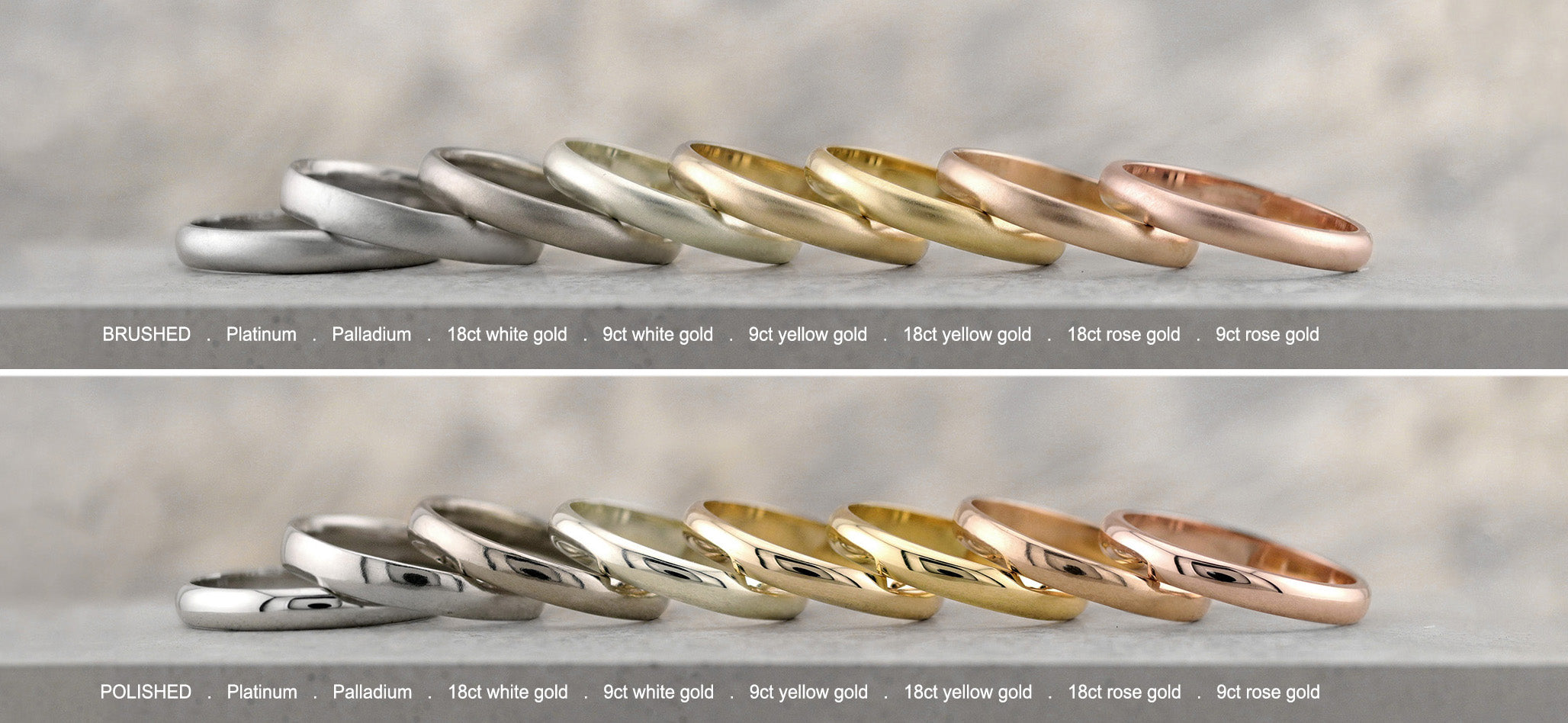
-
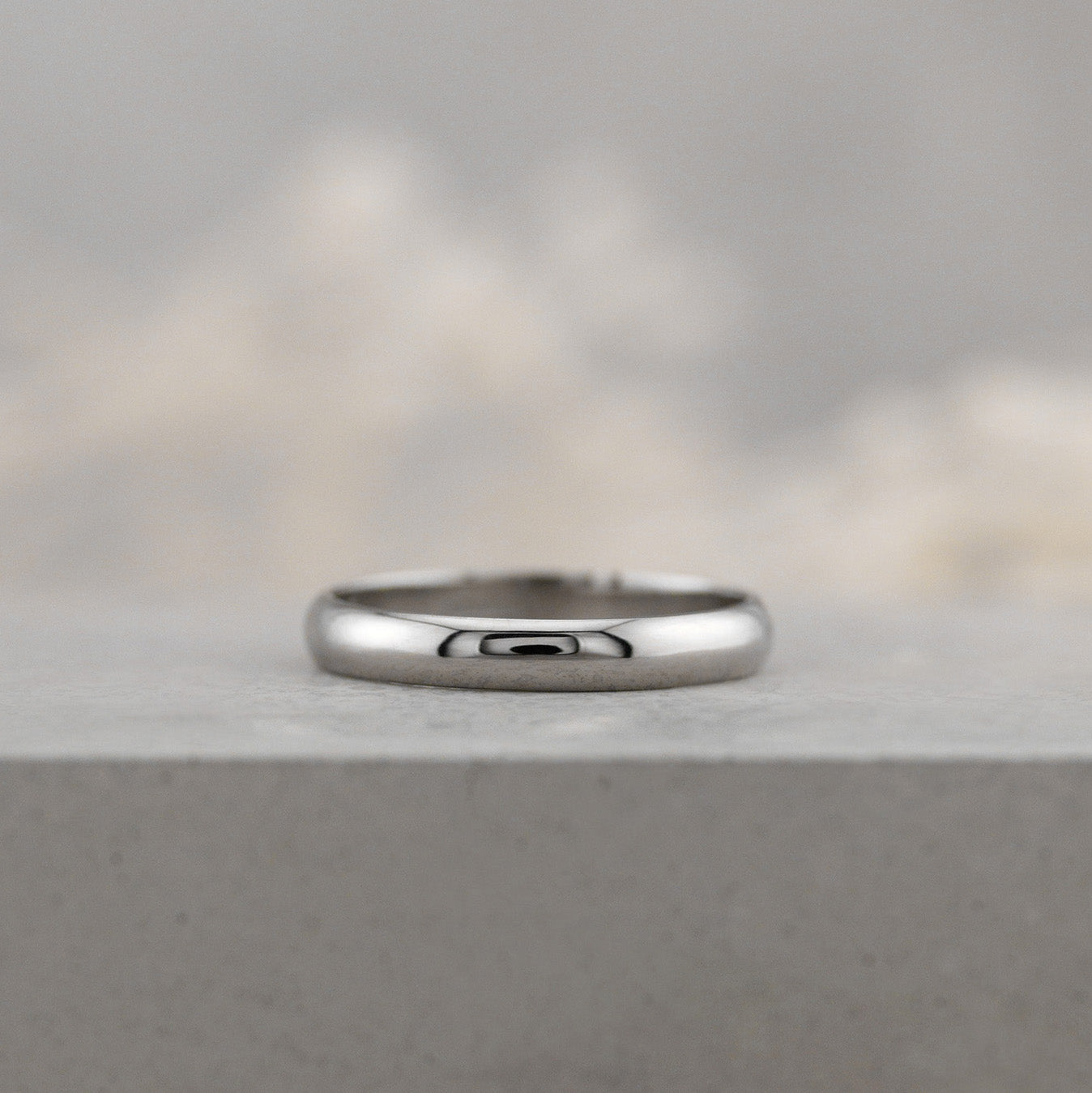
Platinum
Platinum is the hardest precious metal and is a light grey colour. It is 95% platinum alloyed with 5% copper. It does not tarnish and holds its polish well, requiring the least maintenance of the white metals. It is hypoallergenic making it a popular choice if you have sensitive skin.
Platinum is suitable if you would like a very slim or delicate ring as it is the most durable option.
-
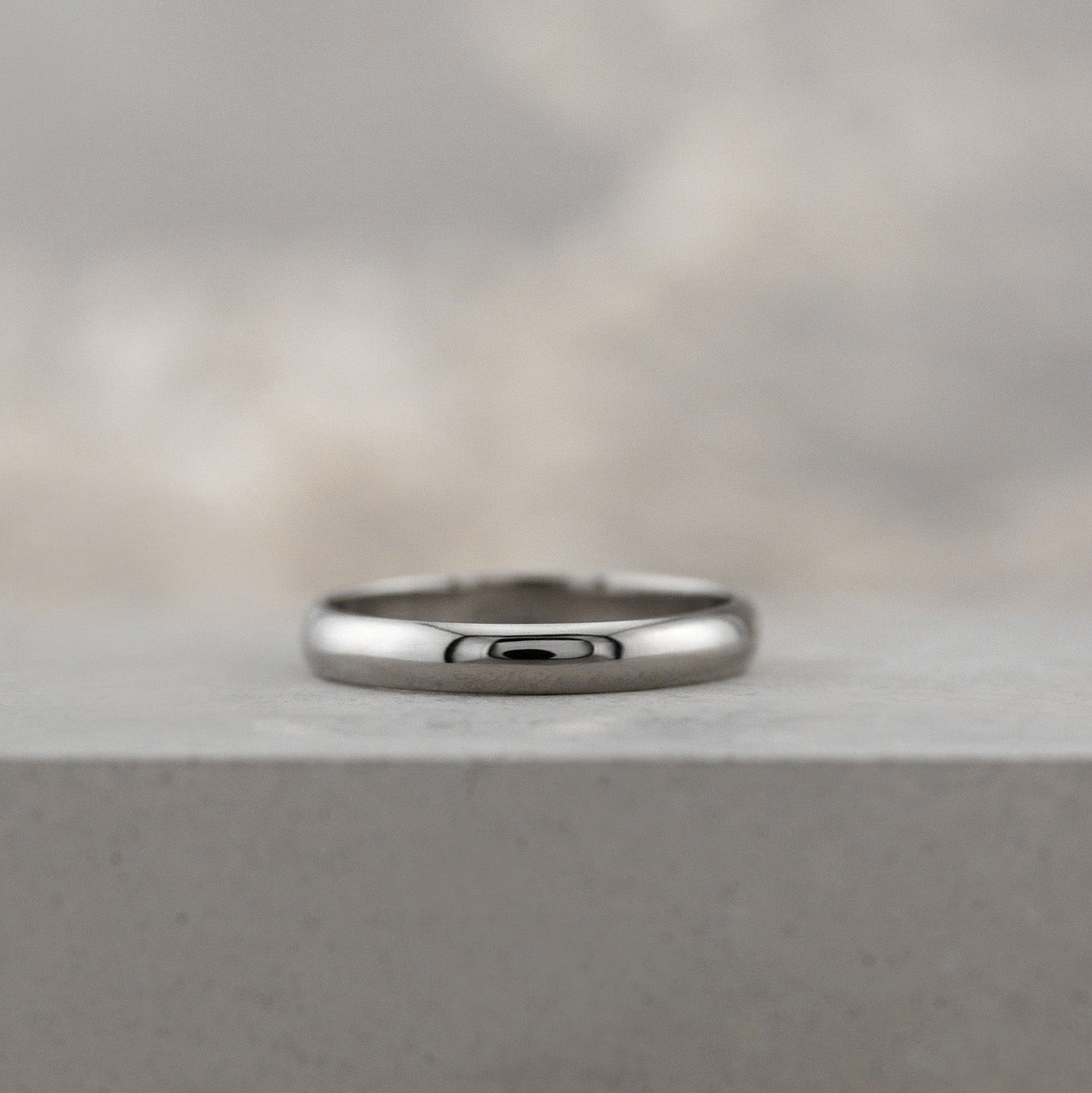
Palladium
Palladium is the second hardest precious metal and is a dark grey colour. It is 95% palladium alloyed with 5% copper. It has the same surface hardness as platinum but is half the density which reduces its overall durability. It is also hypoallergenic making it a popular choice if you have sensitive skin.
-
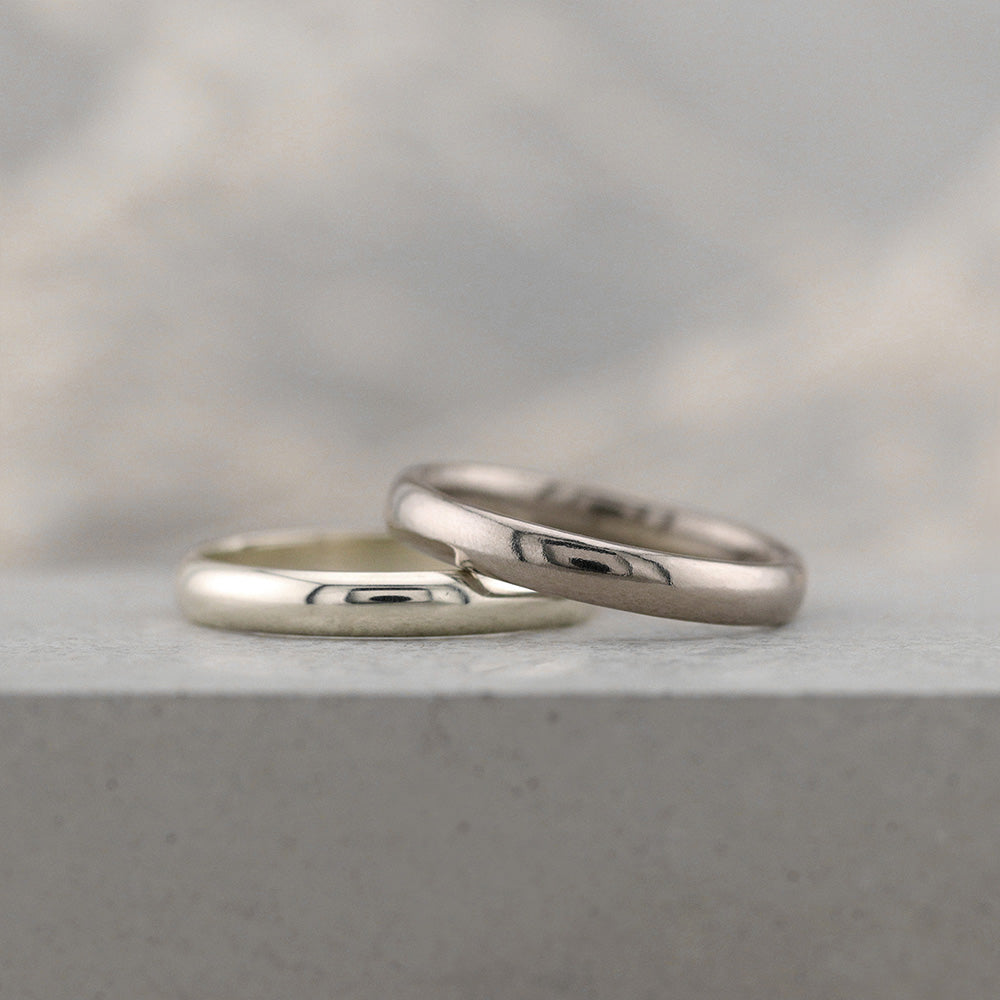
White Gold
9ct white gold (37.5% gold) is light grey with a yellow tint, and less durable than 18ct. 18ct white gold (75% gold) is dark grey with an orange tint and is much harder than 9ct as it is alloyed with palladium, and more durable as it is 50% denser. (Bespoke rings can also be made in 14ct white gold).
White gold can also be rhodium plated to make it the same colour as platinum, but this needs to be re-applied every couple of years.
-
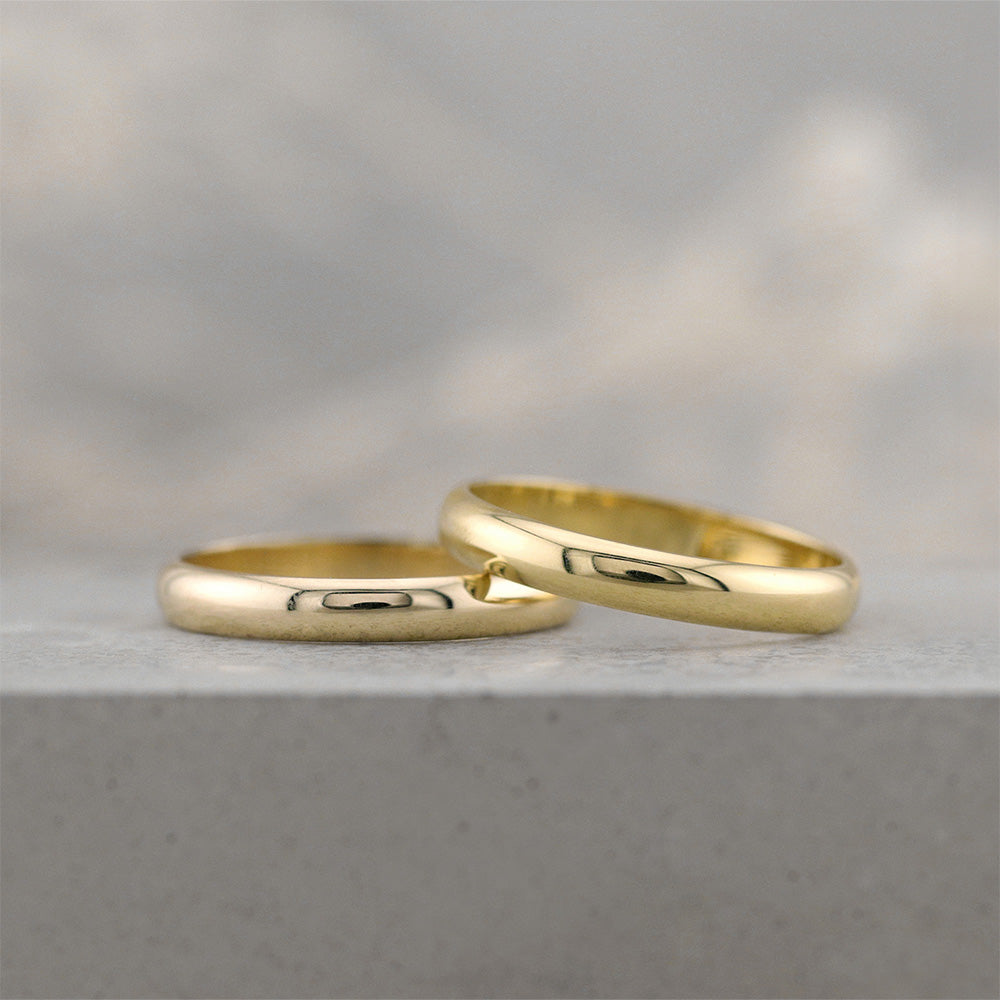
Yellow Gold
9ct yellow gold (37.5% gold) is a subtle yellow colour and slightly less durable than 18ct. 18ct yellow gold (75% gold) is a stronger yellow gold colour and more durable as it's also 50% denser. Yellow gold rings wear at quite a similar rate and are usually chosen based on colour or purity preference. (Bespoke rings can also be made in 14ct yellow gold (58.5% gold) and 22ct yellow gold (91.6%).
-
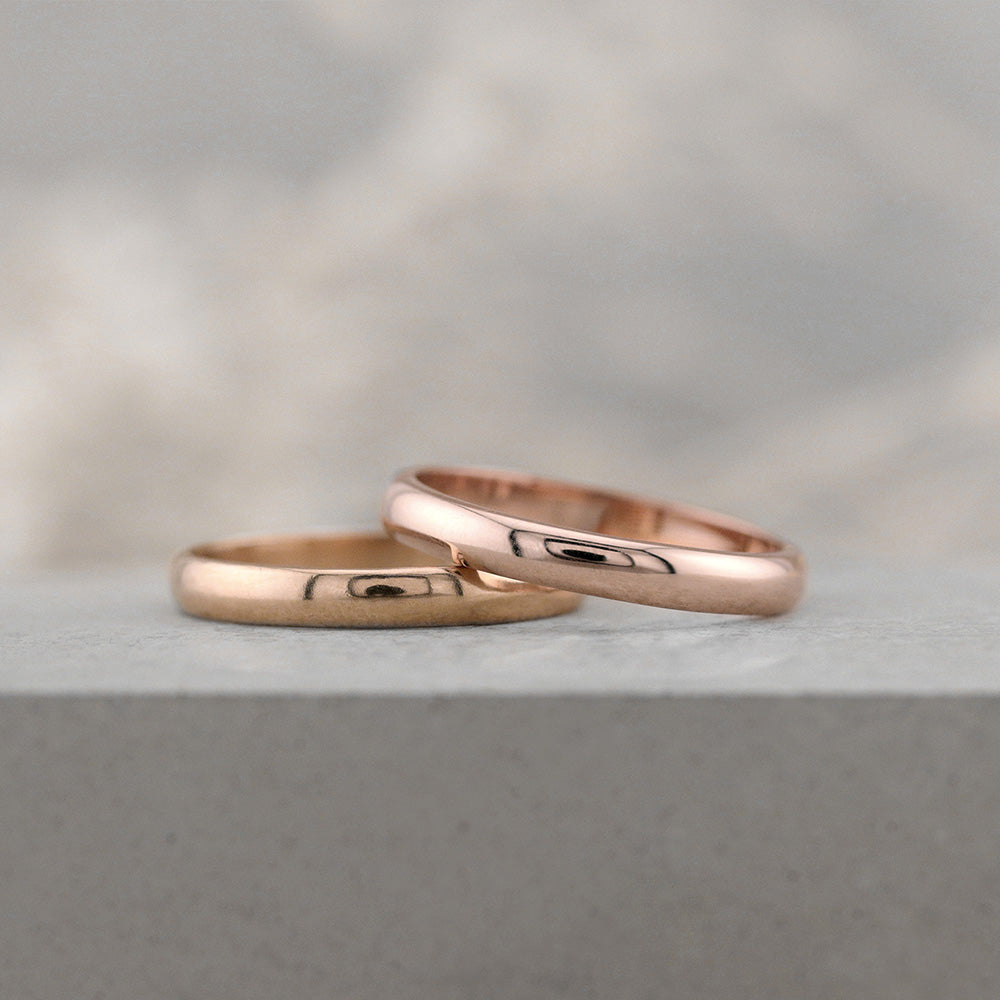
Rose gold
9ct rose gold (37.5% gold) is a stronger copper colour and slightly less durable than 18ct. 18ct rose gold (75% gold) is a slightly more yellowy-copper colour and more durable as it's also 50% denser. Rose gold rings wear at quite a similar rate and are usually chosen based on colour or purity preference.(Bespoke rings can also be made in 14ct rose gold).
-
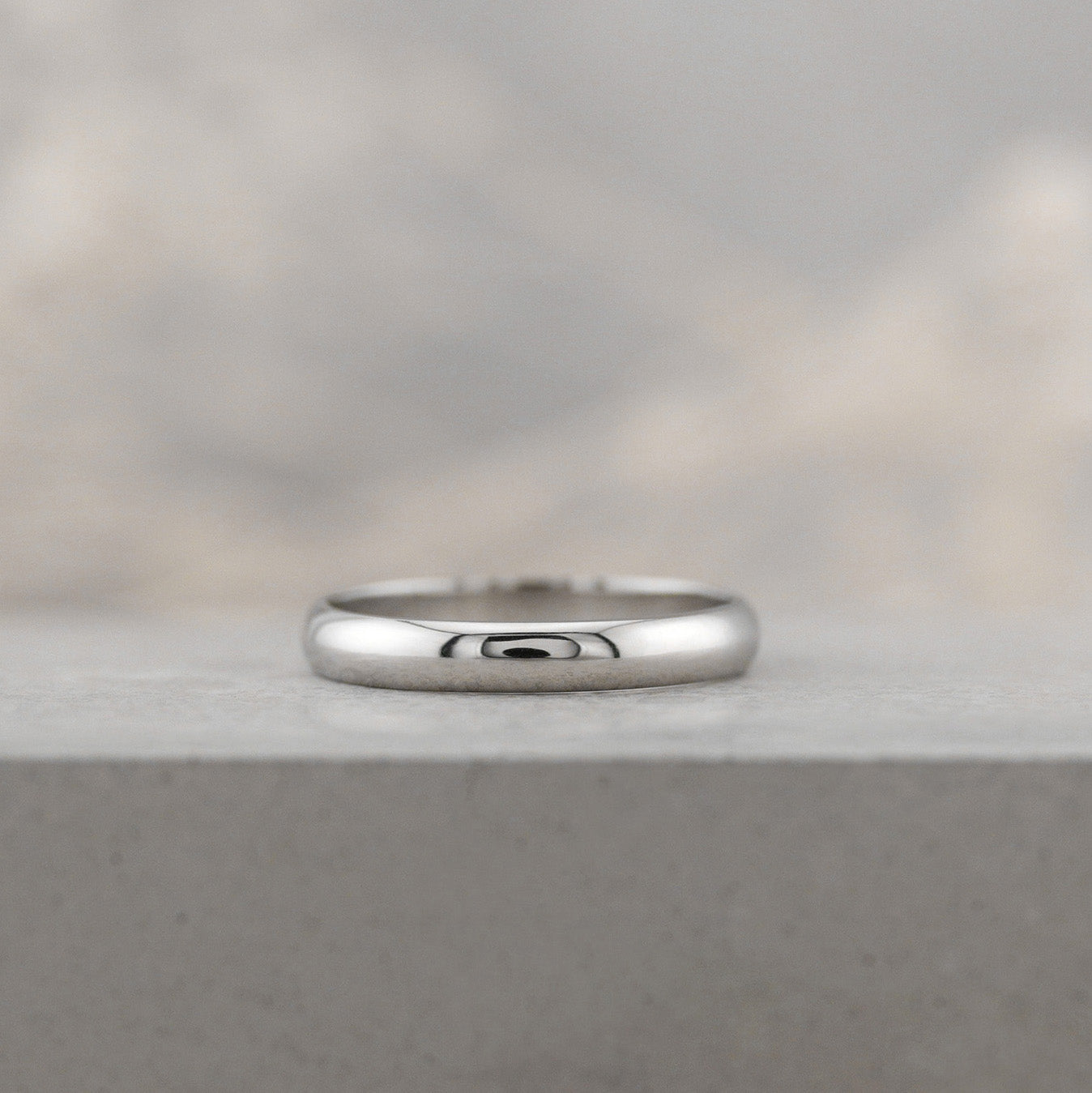
Silver
Sterling silver is 92.5% silver alloyed with mainly copper. Silver is only suitable for larger heavy-weight rings as it is much softer than the other metals and will become dented and worn down at a much faster rate. Silver rings are unlikely to survive more
than 10-20 years of constant wear. Silver also tarnishes which can make it
unsuitable for some people.
Your questions answered
FAQs
Hardness and Durability
In order of hardness and durability, from hardest to softest the metals are:
platinum, palladium, 18ct white gold, 18ct yellow and rose gold, 9ct gold (yellow, white and rose) and finally silver.
Cost
In order of price, from most expensive to least expensive the metals are currently:
18ct white gold, 18ct yellow and rose gold, platinum, palladium, 9ct white gold, 9ct yellow and rose gold, silver.
Below are examples of material costs for average sized wedding rings with a smooth shiny, matte or hammered finish. (Decorative designs and textures will cost more). The finger size, ring weight and profile shape greatly affect the cost of the ring, as does the metal price which changes daily. These prices were calculated in August 2023.
3mm wide x 1.7mm thick medium weight court ring in a size M.
9ct gold - yellow / rose gold £280. White gold £310.
18ct gold - yellow / rose gold £550. White gold £650.
Platinum £550.
5mm wide x 1.9mm thick medium weight court ring in a size S.
9ct gold - yellow / rose gold £500. White gold £550.
18ct gold - yellow / rose gold £1050. White gold £1150.
Platinum £1000.
Hallmarking
Your rings will be hallmarked at the Birmingham Assay Office. The metal is tested and then stamped / laser engraved with the corresponding hallmarks. Read more about hallmarking here.
